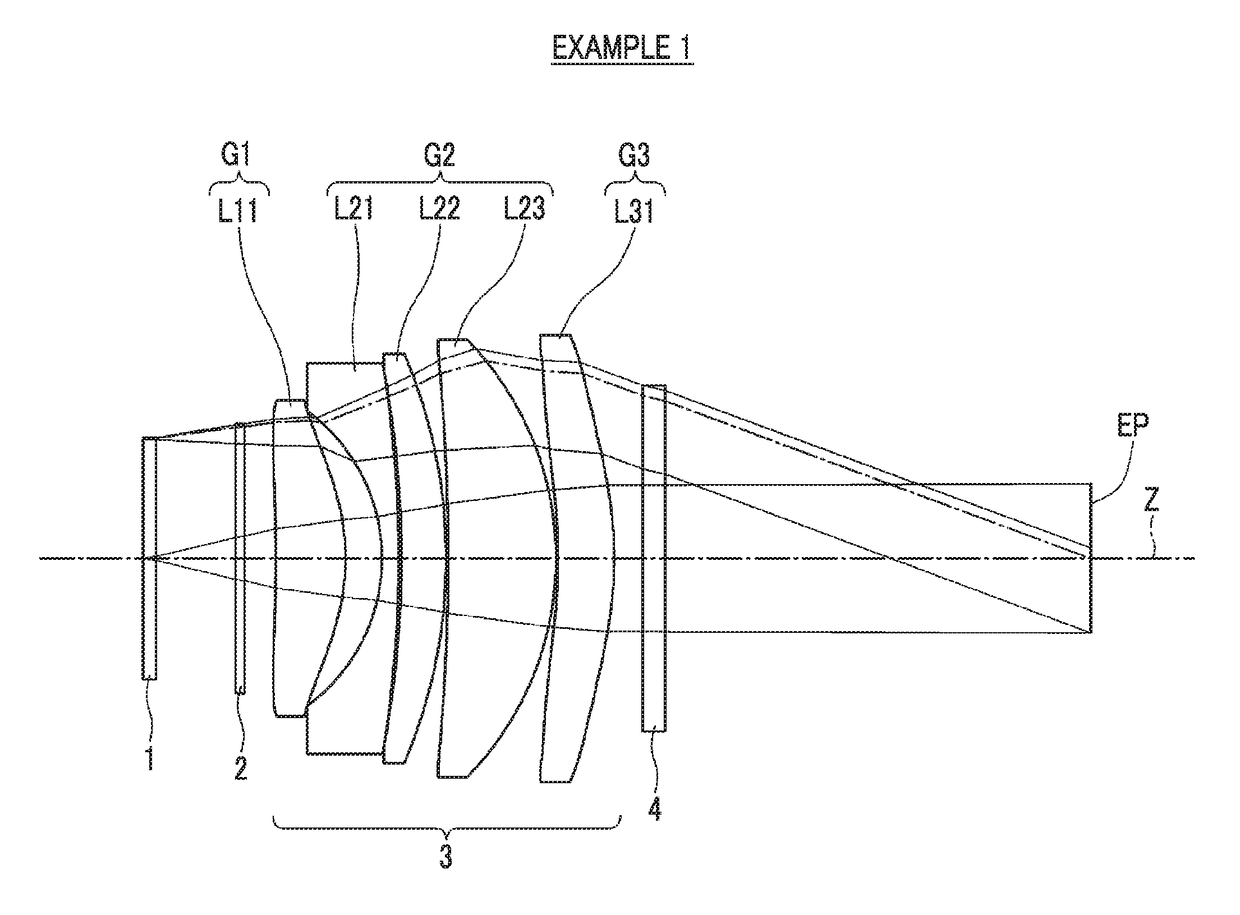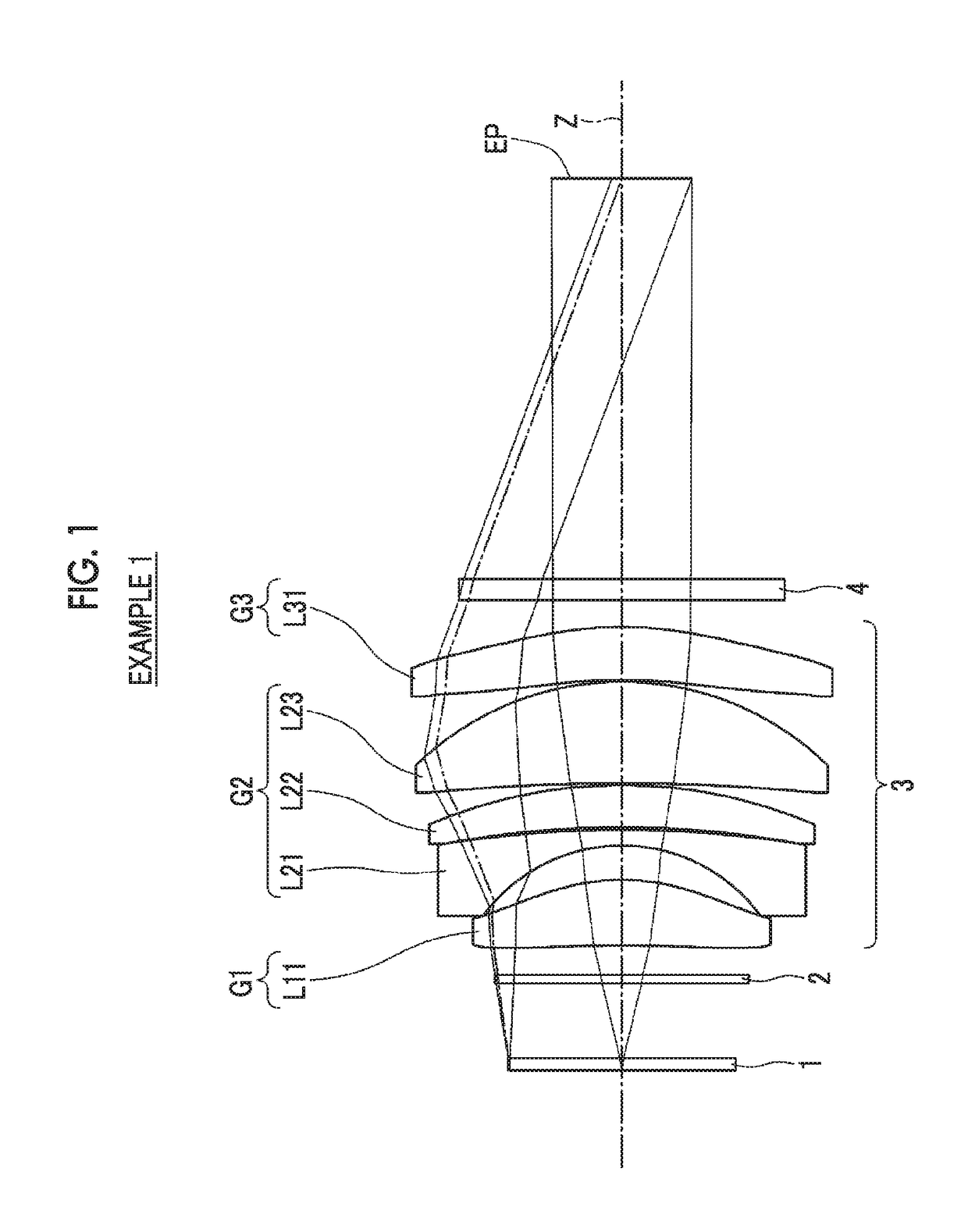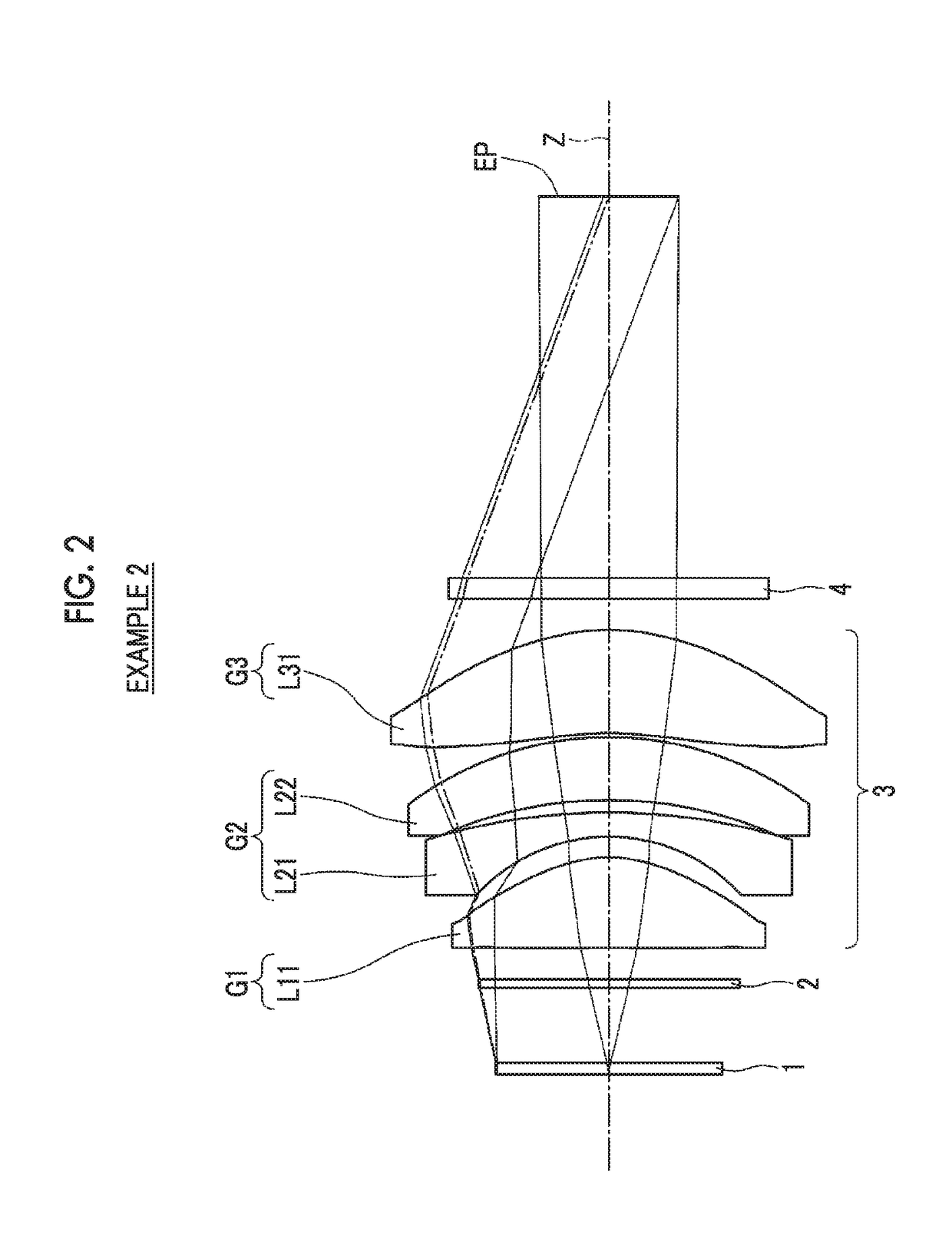Ocular lens and imaging apparatus
a technology which is applied in the field of optical lenses and imaging apparatus, can solve the problems of not being able to achieve the magnification of the field of view, and achieve the effects of satisfactory optical performance, wide apparent field of view, and high eye-poin
- Summary
- Abstract
- Description
- Claims
- Application Information
AI Technical Summary
Benefits of technology
Problems solved by technology
Method used
Image
Examples
example 1
[0074]A lens configuration and an optical path of an ocular lens of Example 1 are shown in FIG. 1, and a method of illustration thereof and the configuration thereof are as described, as the example shown in FIG. 1. Therefore, the repeated description thereof will be partially omitted herein. The ocular lens of Example 1 consists of a first lens group G1 having a positive refractive power, a second lens group G2 having a positive refractive power, and a third lens group G3 having a positive refractive power, in order from the object side. The second lens group G2 consists of a meniscus-shaped lens L21 having a negative refractive power with the convex surface toward the eye-point side and two meniscus-shaped lenses L22 and L23 having a positive refractive power with the convex surface toward the eye-point side, in order from the object side.
[0075]Table 1 shows basic lens data of the ocular lens of Example 1, Table 2 shows specifications, and Table 3 shows aspherical coefficients. Th...
example 2
[0086]A lens configuration and an optical path of an ocular lens of Example 2 are shown in FIG. 2. The ocular lens of Example 2 consists of a first lens group G1 having a positive refractive power, a second lens group G2 having a negative refractive power, and a third lens group G3 having a positive refractive power, in order from the object side. the second lens group G2 consists of a meniscus-shaped lens L21 having a negative refractive power with the convex surface toward the eye-point side and a meniscus-shaped lens L22 having a positive refractive power with the convex surface toward the eye-point side, in order from the object side.
[0087]Table 4 shows basic lens data of the ocular lens of Example 2, Table 5 shows specifications, Table 6 shows aspherical coefficients, and FIG. 5 shows a diagram of aberrations. The values shown in Table 5 correspond to a case where the diopter scale is −1 diopter, and the ocular lens of Example 2 is configured such that the adjustment of the dio...
example 3
[0088]A lens configuration and an optical path of an ocular lens of Example 3 are shown in FIG. 3. The ocular lens of Example 3 consists of a first lens group G1 having a positive refractive power, a second lens group G2 having a negative refractive power, and a third lens group G3 having a positive refractive power, in order from the object side. The second lens group G2 consists of a meniscus-shaped lens L21 having a negative refractive power with the convex surface toward the eye-point side, a biconcave lens L22, and a biconvex lens L23, in order from the object side.
[0089]Table 7 shows basic lens data of the ocular lens of Example 3, Table 8 shows specifications, Table 9 shows aspherical coefficients, and FIG. 6 shows a diagram of aberrations. The values shown in Table 8 correspond to a case where the diopter scale is −1 diopter, and the ocular lens of Example 3 is configured such that the adjustment of the diopter scale in a range of −4 diopter to +2 diopter can be performed by...
PUM
 Login to View More
Login to View More Abstract
Description
Claims
Application Information
 Login to View More
Login to View More - R&D
- Intellectual Property
- Life Sciences
- Materials
- Tech Scout
- Unparalleled Data Quality
- Higher Quality Content
- 60% Fewer Hallucinations
Browse by: Latest US Patents, China's latest patents, Technical Efficacy Thesaurus, Application Domain, Technology Topic, Popular Technical Reports.
© 2025 PatSnap. All rights reserved.Legal|Privacy policy|Modern Slavery Act Transparency Statement|Sitemap|About US| Contact US: help@patsnap.com



